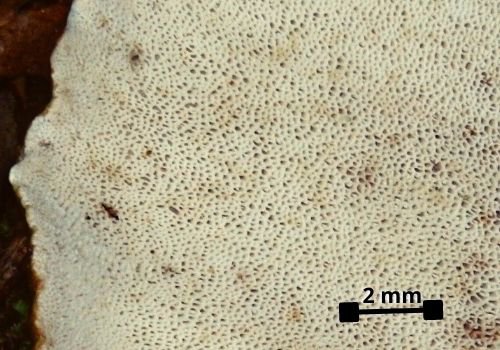Trametes versicolor, the scientific name for the fascinating and adaptable Turkey Tail mushroom, has a variety of applications. It is not only a stunning addition to any forest floor, but it also has amazing therapeutic and culinary qualities.
If you’re interested in learning more about Turkey Tail mushrooms including where they grow how to identify them, and their potential benefits, you’ve come to the right place. This comprehensive guide will delve deep into the world of Turkey Tail, providing you with all the information you need to know.
Where to Find Turkey Tail Mushrooms
Turkey Tail mushrooms are widely distributed throughout North America and can be found in a variety of habitats. They typically grow on dead or dying hardwood trees, such as oak, maple, and birch. They can also be found on fallen logs and stumps.
Identifying Turkey Tail Mushrooms
Identifying Turkey Tail mushrooms is relatively easy, even for novice mushroom hunters. Here are some key characteristics to look for:
- Shape: Turkey Tail mushrooms have a distinctive fan-shaped or semicircular cap with a wavy margin. The cap can range in size from 1 to 4 inches in diameter.
- Color: The upper surface of the cap is typically multicolored, with zones of brown, gray, blue, and black. The underside of the cap is white or cream-colored and covered with tiny pores.
- Texture: The cap of a Turkey Tail mushroom is tough and leathery, with a velvety texture.
- Habitat: As mentioned earlier, Turkey Tail mushrooms are typically found on dead or dying hardwood trees.
Benefits of Turkey Tail Mushrooms
Turkey Tail mushrooms have been used for centuries in traditional Chinese medicine. Modern research has confirmed the presence of various bioactive compounds in Turkey Tail, including polysaccharides, triterpenes, and antioxidants. These compounds are believed to have a number of potential health benefits, including:
- Boosting the immune system: Turkey Tail mushrooms have been shown to stimulate the production of white blood cells, which are essential for fighting infection.
- Fighting cancer: Studies have shown that Turkey Tail may help to slow the growth of cancer cells and improve the effectiveness of chemotherapy.
- Reducing inflammation: Turkey Tail has anti-inflammatory properties that may help to reduce pain and swelling.
- Improving gut health: Turkey Tail may help to promote the growth of beneficial bacteria in the gut.
How to Use Turkey Tail Mushrooms
Turkey Tail mushrooms can be eaten fresh, dried, or in powdered form. They can be added to soups, stews, stir-fries, and other dishes. Turkey Tail extract is also available in capsule form.
Turkey tail mushrooms are an intriguing and adaptable fungus that may have many advantages. Check out the resources provided below if you’d like to learn more about this incredible mushroom.
Additional Resources
- Real Mushrooms: Turkey Tail Mushroom Identification: A 4-Point Checklist
- Missouri Department of Conservation: Turkey Tail Mushroom
- National Center for Complementary and Integrative Health: Turkey Tail
Frequently Asked Questions
- Q: Are Turkey Tail mushrooms safe to eat?
- A: Yes, Turkey Tail mushrooms are generally considered safe to eat. However, it’s important to be sure that you have correctly identified the mushroom before consuming it.
- Q: Where can I buy Turkey Tail mushrooms?
- A: Turkey Tail mushrooms can be found at some health food stores and online retailers.
- Q: How do I use Turkey Tail mushrooms?
- A: Turkey Tail mushrooms can be eaten fresh, dried, or in powdered form. They can be added to soups, stews, stir-fries, and other dishes. Turkey Tail extract is also available in capsule form.
Turkey Tail Mushroom Identification Checklist
If you can answer “YES” to all of the following questions about the mushroom you’re looking at, you’ve found true turkey tail!
- If so, the image below shows what the pores on the underside of your mushroom should look like.
- Does the top side of the mushroom have little hairs that make it feel velvety?
- Does the mushroom have colored bands that are concentric on its upper side?
- Is the fresh mushroom flexible and thin, as demonstrated in the video below?

Turkey Tail Mushroom Identification
Luckily, when it comes to turkey tail mushroom identification there are no toxic lookalikes. Therefore, even if you don’t end up finding “the real thing,” it’s safe to go mushroom hunting. Because turkey tail, or Trametes versicolor as it is scientifically known, is valued for its beneficial properties, while some mushrooms may appear similar, they do not.
So, use our 4-point checklist below to help you find the real deal. Afterwards, you can use your newly acquired ability to deduce mushrooms during your upcoming woodland stroll. If you want to forage for food, you can bring some fresh turkey tail home to make a healthy tea.
